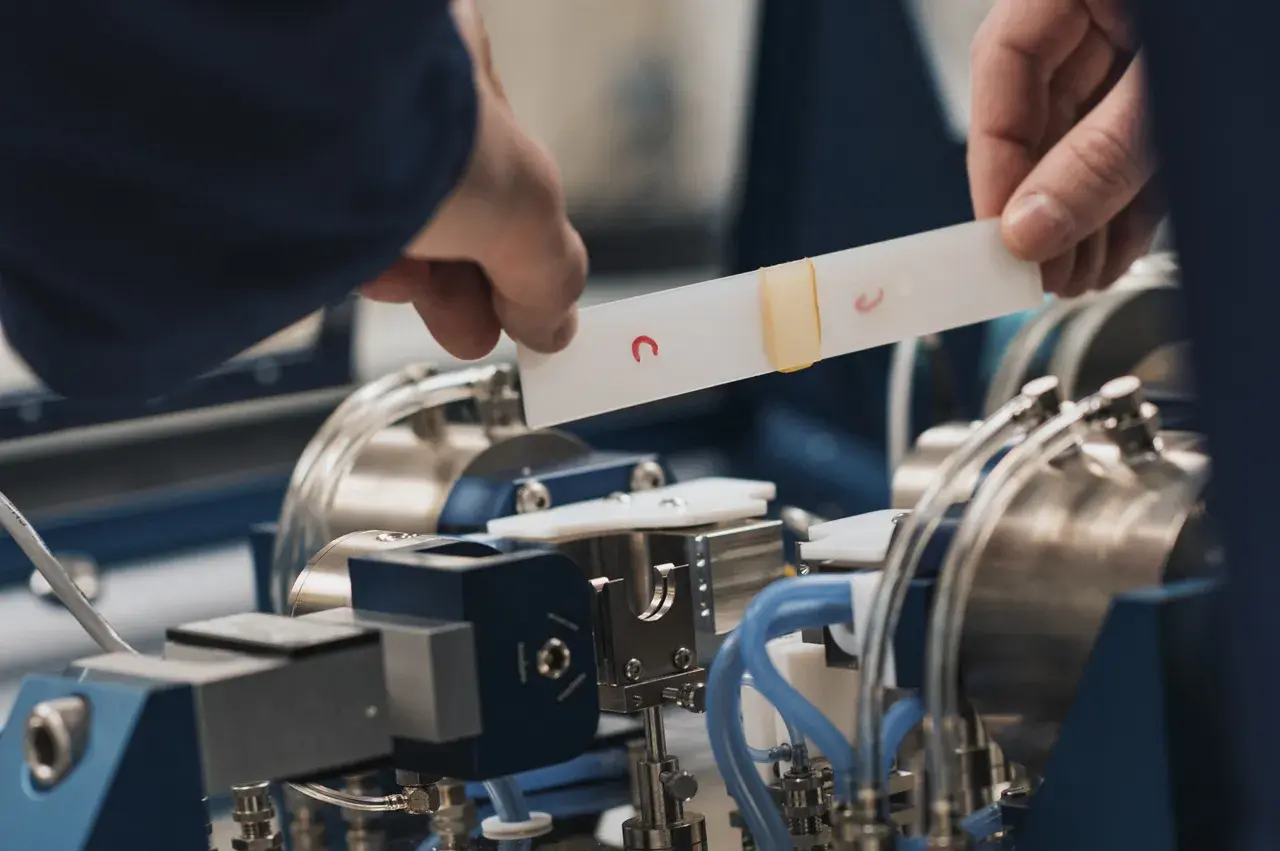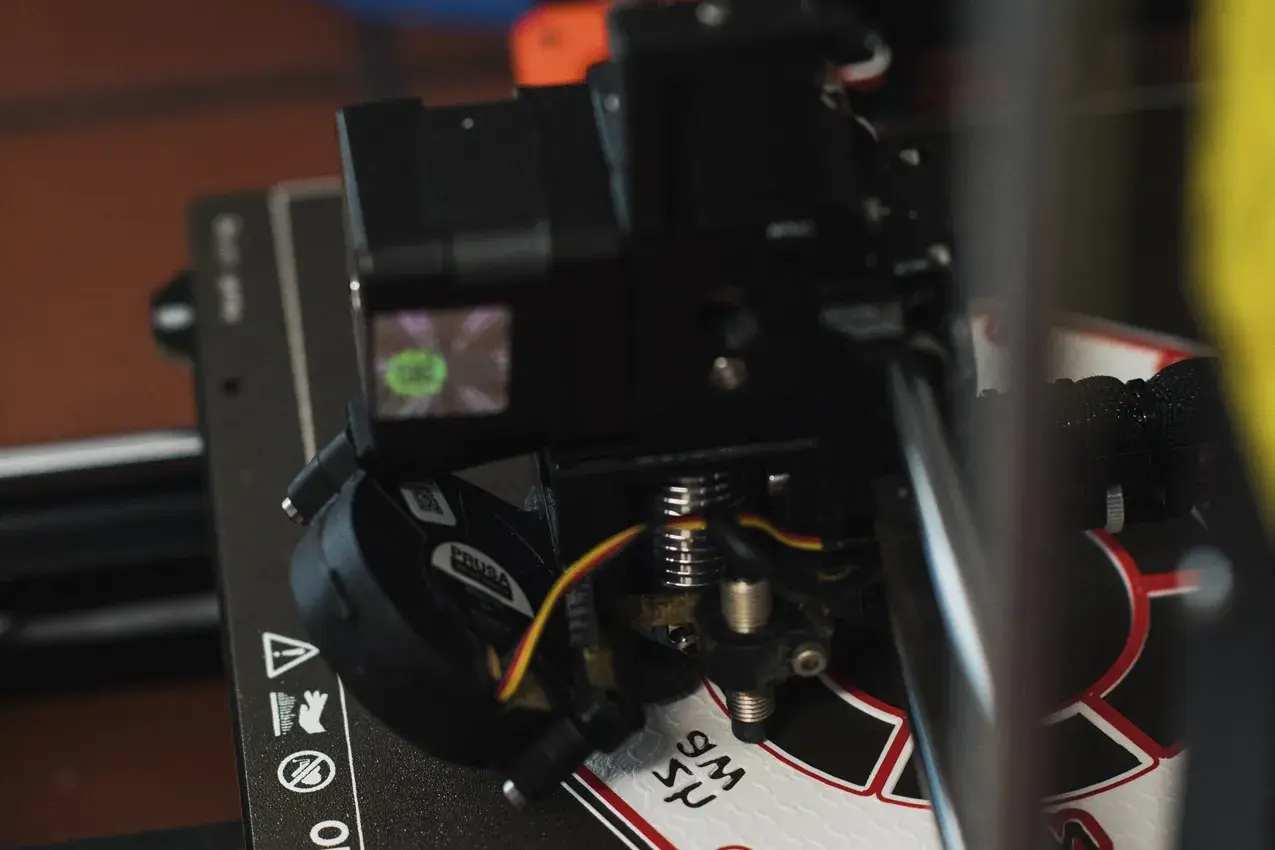Adhesives and Polymer Materials
Research and development of adhesives and polymer materials leads to innovative solutions that improve the performance, sustainability and efficiency of products. From environmentally friendly adhesives to high-performance polymers, we are making significant progress with our project partner in these areas.
The Adhesives and Polymer Materials Laboratory focuses on the development and investigation of adhesives and polymeric materials used in various applications.
Polymer Development

Our polymer developments include the synthesis of new polymers as well as the modification of existing plastics to improve their properties. This can be achieved by introducing new monomers, or adapting the polymer structure, for example by grafting or adding additives. The aim is to produce polymer materials with specific properties such as high strength, flexibility, biodegradability or temperature stability. An important aspect of polymer development is sustainability, with a focus on the development of bio-based, biodegradable, or recyclable plastics.
We cover the entire field of plastics production. From the synthesis of monomers on a laboratory scale (glass flasks, Schlenk technology) to processing with extruders and injection molding, we can map the process chain of polymer engineering. We are using extensive and flexible equipment to cover the various areas of application on a laboratory scale.
We deal with the processing of polymers into finished products. This includes the development and optimization of processing methods such as extrusion, injection molding, and 3D printing. We can also use reactive extrusion on a laboratory scale for functionalization. We have two industrial injection molding systems and several single and twin screw extruders for very small quantities up to pilot plant scale in various designs.
Another area of expertise is additive manufacturing processes such as 3D printing. Several filament (MEX) and stereolithography (SLA) printers are used for research projects. A granulate printer can also be used so that no filaments have to be produced. Our focus is on the new development of innovative materials and the printing of unusual structures.
Bonding Technology

Our laboratory is intensively involved in the development of new adhesives, with a focus on innovative approaches and ideas. In close cooperation with companies, we develop new products and technologies to create novel solutions that meet market requirements and continuously improve the performance of adhesives.
High-performance adhesives are researched through the introduction of novel additives and the investigation of structure-property relationships. Statistical methods using Design of Experiment (DoE) approaches to investigate the influences of various factors on the adhesive properties are systematically used.
Studying the adhesion properties of adhesives is crucial to evaluate their performance in various applications. Long-term durability is also analyzed to ensure that the adhesives function reliably over a longer period of time. These tests help to optimize the quality and durability of the adhesives and to confirm their suitability for specific applications.
To improve wettability and thus increase adhesion, we use surface modification techniques such as plasma (vacuum and atmospheric plasma) and investigate the influence on the contact angle, surface energies, and adhesive behavior.
The optimization of bonding processes and methods aims to improve the efficiency and reliability of adhesive joints (keyword DIN 2304-1). For quality assurance, extensive material tests and analyses are carried out to ensure that the adhesives meet the required standards and function reliably.
In addition, we offer comprehensive consulting to support customers in the selection and application of adhesives and polymers.
Characterizations

The laboratory is equipped with state-of-the-art technology to carry out comprehensive material investigations and tests. These include equipment for mechanical testing, thermal analysis, and chemical characterization.
On the one hand, our analysis focuses on the investigation at the molecular level. For this purpose, we use IR, Raman, NMR, UV/VIS, and mass spectroscopy. Elemental analysis (ICP-OES, GC-MS, REM-EDX, and XPS) helps us to detect and determine additives, and impurities. Gel permeation chromatography (GPC) is available to determine the degree of polymerization.
The thermal behavior of the plastics is decisive for the area of application. For this purpose, we use classical thermal analysis (DSC, DMA, TGA) but also simultaneous thermal analysis methods with coupled gas analysis (IR, MS).
The mechanical characteristics of polymers and adhesives are measured by tensile and compression tests with a variety of test equipment, even at different temperatures.
The viscoelastic properties are very characteristic and often determine the area of application of plastics. Rheological investigations play an important role in the development and applications of adhesives. We deal in depth with the rheology of polymeric systems (rotational rheometers, MFI, DMA).
To characterize the surface, we use confocal microscopy, AFM and SEM, which are also correlatively connected to each other and thus generate in-depth information.
Applications

The laboratory is involved in numerous research projects and works closely with industrial partners and other research institutions. These collaborations, often funded by Innosuisse, enable the transfer of knowledge and the application of the latest research results in practice.
We are currently working on several projects that aim to develop novel bioplastics. On the one hand, novel bio-based raw materials are available that represent sustainable alternatives to conventional plastics. These are modified and used in combination with other biodegradable materials to create eco-friendly packaging and products. Research focuses on optimizing the mechanical properties and degradability of these bioplastics to enable their application in various industries.
In the footwear sector, we are active in the development of novel, recyclable and individually adaptable soles using 3D printing. On the other hand, midsoles have been developed that have very high rebound elasticity at very low densities so that efficient running is possible. Furthermore, projects are underway to develop sustainable soles so that sole abrasion in nature does not have a detrimental effect.
We are actively involved in the InnoBooster "Applied Circular Sustainability". This is an initiative to promote the circular economy and sustainability in various industries. In doing so, we contribute to the development and implementation of innovative solutions that aim to use resources more efficiently and minimize waste (e.g. Project Waste-to-Wow).
In the field of 3D printing, high-performance polymers were highly filled, developed and printed using novel methods. Filaments from waste streams generated in industry or private households are also researched, produced, and tested.
The formulation of adhesives is a core competence of our research activities. Sports adhesives are being developed that offer broad adhesion to various materials and at the same time have an optimal curing process. The research includes formulating the adhesive, optimizing the curing process, and testing adhesion and durability under real-world conditions.
A structural rubber adhesive combines the flexibility of elastomers with the stiffness of thermosets and can be used in automotive applications where strong and durable joints are required.